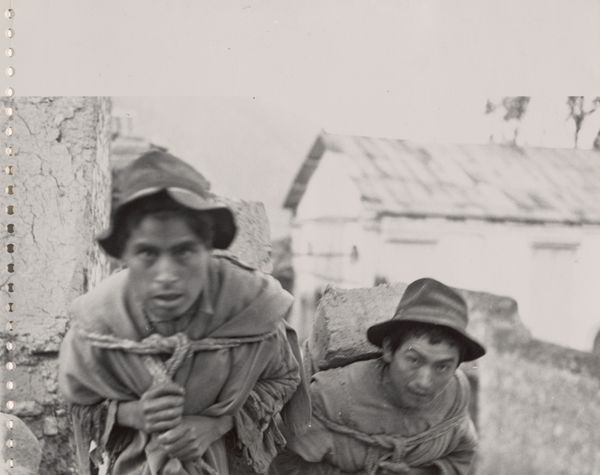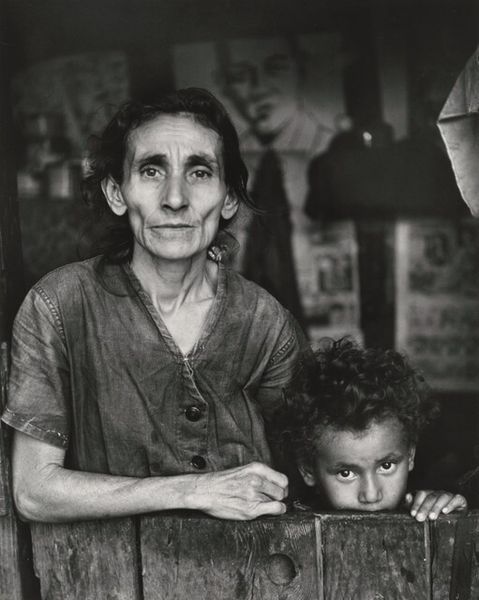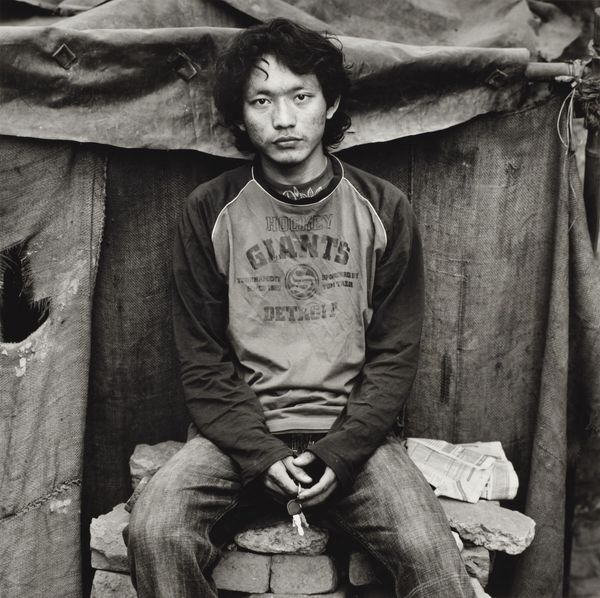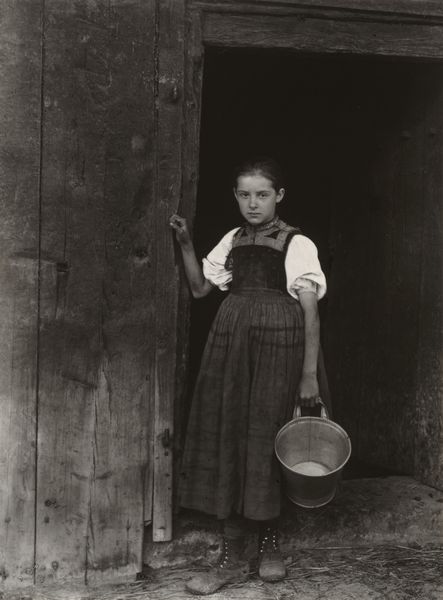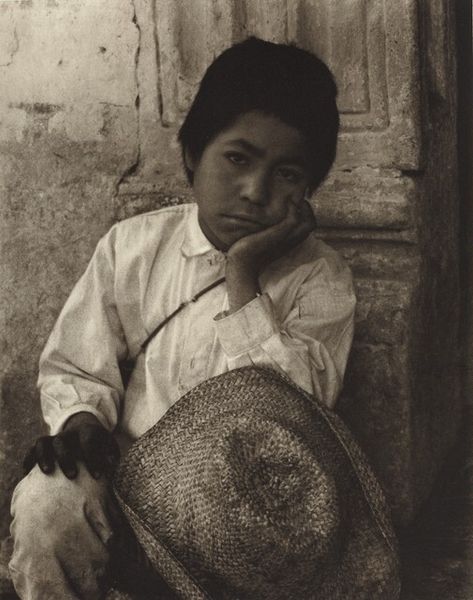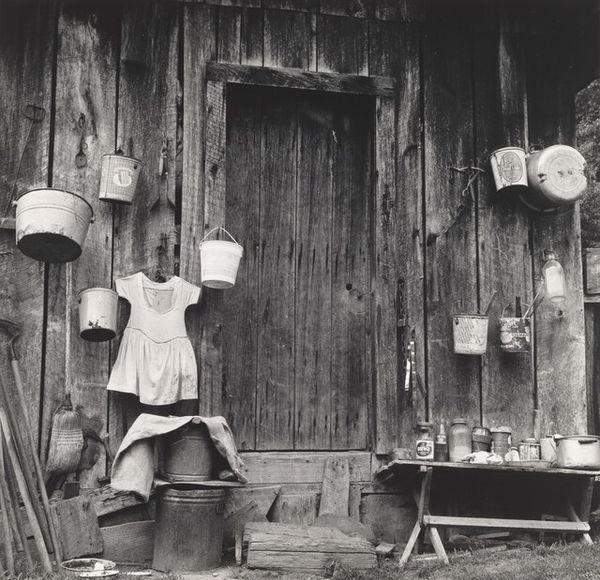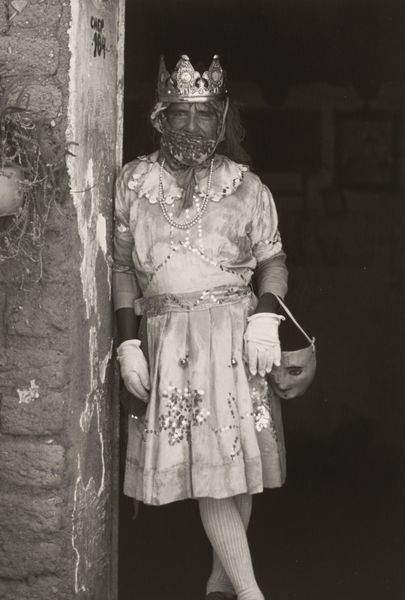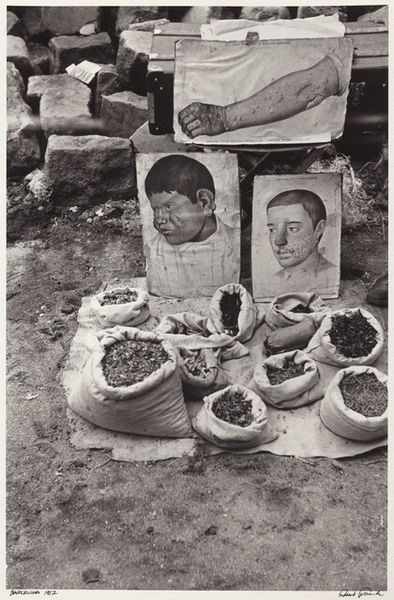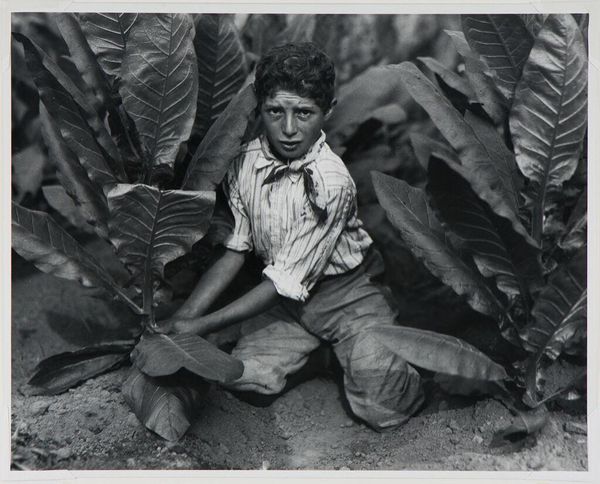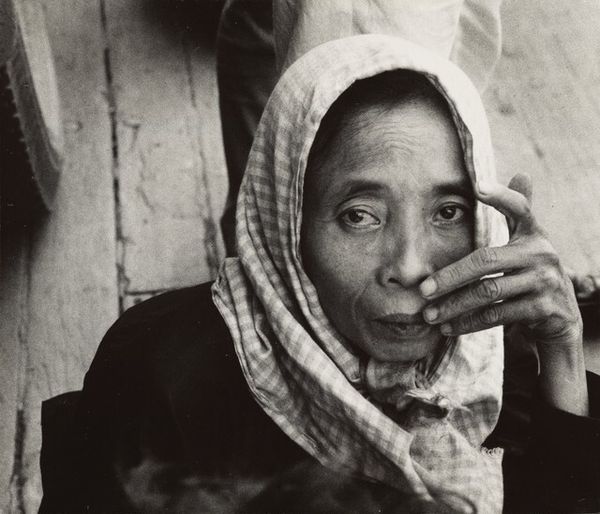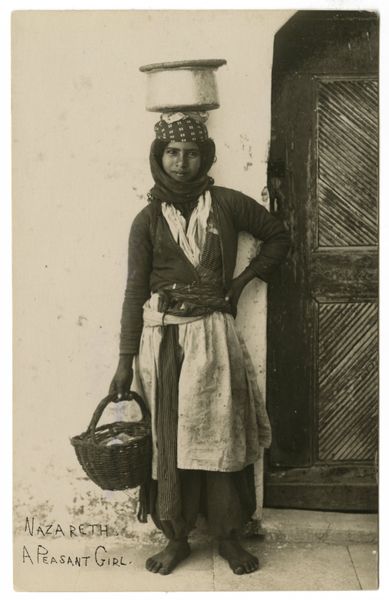
Dimensions: image: 22 × 15.5 cm (8 11/16 × 6 1/8 in.) sheet: 25.4 × 20.32 cm (10 × 8 in.)
Copyright: National Gallery of Art: CC0 1.0
Curator: Graciela Iturbide created this gelatin silver print, “Cuatro Pescaditos (Four Little Fish)” sometime between 1986 and 1990. Editor: It's captivating! The woman framed by the window, the stark contrast of the monochrome palette – there’s a sense of intimacy, almost as if we're peering into a private world, yet something feels unsettling, the rough texture of the mudbrick wall set against the dark void behind her, it is compelling. Curator: Iturbide's work frequently explores themes of identity and the everyday lives of indigenous Mexican communities. This image invites reflection on gender roles and the significance of labor within marginalized communities, considering also the politics inherent in documentary photography itself. The second child lurking in the background underscores the intergenerational reality of it all. Editor: And those fish. I read the symbolism immediately as referencing the precarity of living near the sustenance level. Iturbide isn’t simply documenting; she's weaving a narrative that intertwines the woman’s presence with themes of sustenance, family, and, perhaps, the impact of larger social systems. It invites a feminist interpretation as well; womanhood as aligned with resources and providing. Curator: I think your take speaks well to Iturbide’s wider project of making visible that which is so often unseen by those who live in places of privilege. And Iturbide challenges us to really question our gaze as viewers of such scenes, taken out of their lived environment and placed into a viewing context within a museum setting. The question of the politics of imagery and art is primary here. Editor: Precisely. Even the framing, the deliberate placement of the woman in the window...it all contributes to this multifaceted commentary on life, labor, and survival. A photograph as both historical document and a statement. Curator: Absolutely. This artwork allows us to consider both social dynamics and challenge what exactly are the ethics of representing another person's story within our modern exhibition halls. Editor: I'm struck again by the overall composition – it's a stark reminder of the human condition, inviting introspection. Curator: It's more than just a photograph; it’s an experience and it speaks to a story of the artist and her role in representing modern Mexico, with all its issues.
Comments
No comments
Be the first to comment and join the conversation on the ultimate creative platform.
